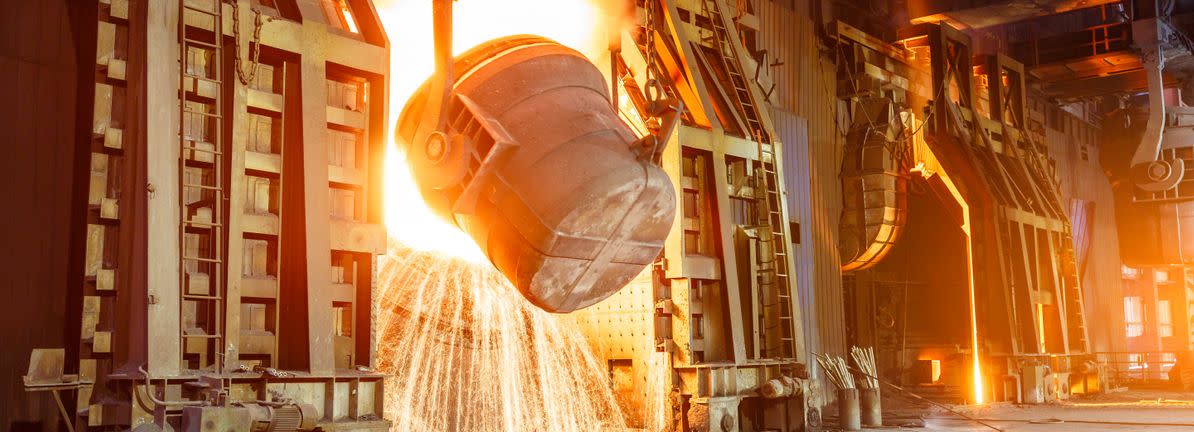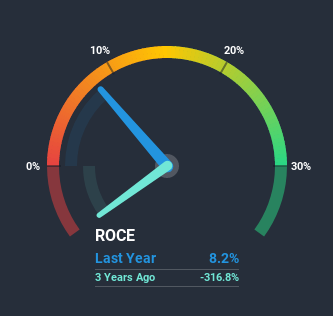What Do The Returns At Cokal (ASX:CKA) Mean Going Forward?

Want to participate in a short research study? Help shape the future of investing tools and earn a $40 gift card!
If we want to find a stock that could multiply over the long term, what are the underlying trends we should look for? One common approach is to try and find a company with returns on capital employed (ROCE) that are increasing, in conjunction with a growing amount of capital employed. Basically this means that a company has profitable initiatives that it can continue to reinvest in, which is a trait of a compounding machine. So when we looked at Cokal (ASX:CKA) and its trend of ROCE, we really liked what we saw.
Return On Capital Employed (ROCE): What is it?
For those who don't know, ROCE is a measure of a company's yearly pre-tax profit (its return), relative to the capital employed in the business. The formula for this calculation on Cokal is:
Return on Capital Employed = Earnings Before Interest and Tax (EBIT) ÷ (Total Assets - Current Liabilities)
0.082 = US$837k ÷ (US$28m - US$17m) (Based on the trailing twelve months to December 2019).
Thus, Cokal has an ROCE of 8.2%. On its own, that's a low figure but it's around the 9.8% average generated by the Metals and Mining industry.
View our latest analysis for Cokal
While the past is not representative of the future, it can be helpful to know how a company has performed historically, which is why we have this chart above. If you want to delve into the historical earnings, revenue and cash flow of Cokal, check out these free graphs here.
What The Trend Of ROCE Can Tell Us
We're delighted to see that Cokal is reaping rewards from its investments and has now broken into profitability. Historically the company was generating losses but as we can see from the latest figures referenced above, they're now earning 8.2% on their capital employed. Additionally, the business is utilizing 83% less capital than it was five years ago, and taken at face value, that can mean the company needs less funds at work to get a return. Cokal could be selling under-performing assets since the ROCE is improving.
On a side note, we noticed that the improvement in ROCE appears to be partly fueled by an increase in current liabilities. Effectively this means that suppliers or short-term creditors are now funding 63% of the business, which is more than it was five years ago. Given it's pretty high ratio, we'd remind investors that having current liabilities at those levels can bring about some risks in certain businesses.
The Bottom Line On Cokal's ROCE
In summary, it's great to see that Cokal has been able to turn things around and earn higher returns on lower amounts of capital. Given the stock has declined 58% in the last five years, there could be a chance of a good investment here if the valuation makes sense. With that in mind, we believe the promising trends warrant this stock for further investigation.
If you'd like to know more about Cokal, we've spotted 5 warning signs, and 1 of them doesn't sit too well with us.
If you want to search for solid companies with great earnings, check out this free list of companies with good balance sheets and impressive returns on equity.
This article by Simply Wall St is general in nature. It does not constitute a recommendation to buy or sell any stock, and does not take account of your objectives, or your financial situation. We aim to bring you long-term focused analysis driven by fundamental data. Note that our analysis may not factor in the latest price-sensitive company announcements or qualitative material. Simply Wall St has no position in any stocks mentioned.
Have feedback on this article? Concerned about the content? Get in touch with us directly. Alternatively, email editorial-team@simplywallst.com.

 Yahoo News
Yahoo News 

